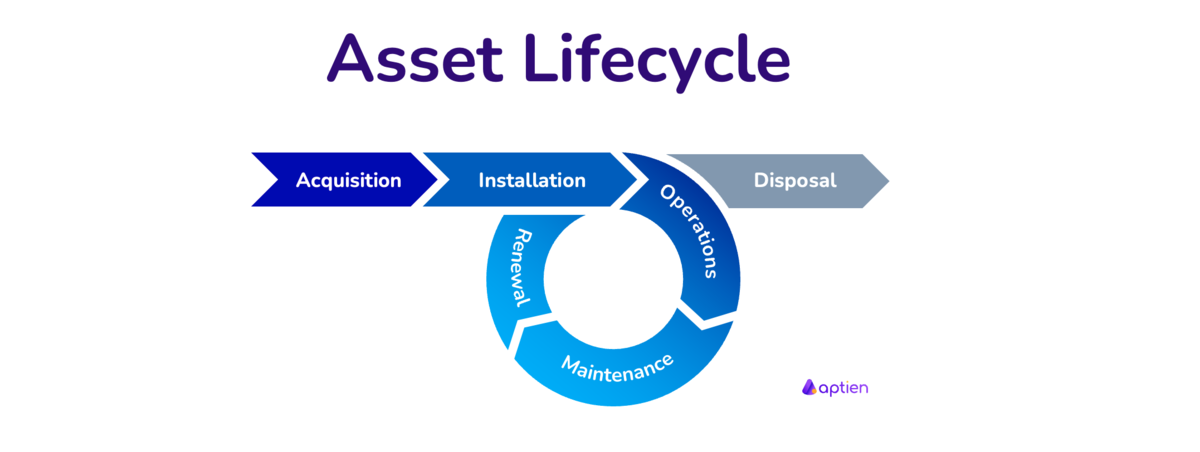Definition of Asset Lifecycle
The asset lifecycle encompasses all stages and processes involved in managing an asset throughout its period of ownership or use.
The lifecycle stages include:
- Acquisition: The process of procuring or obtaining the asset.
- Installation: Setting up the asset for use, including any necessary configuration or integration.
- Operation: The active use of the asset to perform its intended functions.
- Maintenance: Regular upkeep and repairs to ensure the asset remains in good working condition.
- Renewal: Upgrading or refurbishing the asset to extend its useful life.
- Disposal (Retirement): The process of decommissioning and disposing of the asset at the end of its useful life.
How Aptien Simplifies Managing Assets
Aptien providing a range of features that streamline each stage of the process:
- Centralized Asset Register: A unified platform to record all asset-related information in one place.
- Acquisition Details: Records the purchase date, cost, vendor and warranty information
- Location: Indicates the current location of the asset within the organization.
- Condition & Status: Current condition of the asset, including any wear and tear. (new, in use, under repair, retired)
- Assignment & Accountability: Assigned employee, department, or location. Tracks which employee or department is responsible for the asset.
- Maintenance Schedule: Includes planned maintenance activities, schedules, and history.
- Maintenance History: Operational log, Maintenance log, Service records, Inspections, and Updates, Service records, inspections, and updates
- Return & Disposal Info: Date of return or decommissioning details
